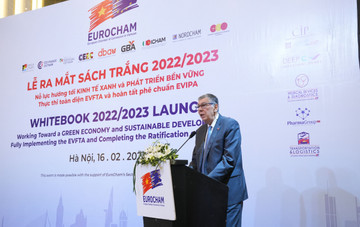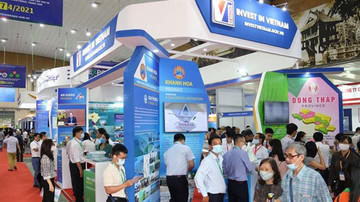- © Copyright of Vietnamnet Global.
- Tel: 024 3772 7988 Fax: (024) 37722734
- Email: evnn@vietnamnet.vn
vietnam economy
Update news vietnam economy
Vietnamese economy sees silver linings despite challenging start to 2023: HSBC
While external woes will likely continue over the near-term, some recovery in the tourism industry may partially cushion some issues faced by the national economy which has some silver linings this year, according to HSBC experts.
With growth slowing, how will Vietnam escape the middle-income trap?
In the last two years, after the 13th Party Congress, resolutions and programs have been issued with the aim of developing Vietnam into an industrialized country.
Domestic businesses in danger of being swallowed up by foreign funds
While newly registered businesses are getting smaller in scale, foreign companies and funds are growing in investment capital.
High interest rates, complex procedures affect enterprises' competitiveness
In the international market, Vietnamese enterprises are at a disadvantage because of several problems in their own home market.
Enterprises with monthly pay over VND10 million on decrease in HCM City
A recent survey of 100 enterprises in HCM City found that the number of them paying monthly salaries of more than VND10 million a month fell from 80 percent in Q2 2022 to 65 percent in Q1 2023.
Economic institution reform key to breaking through middle-income trap: experts
Economists said only 13 out of 101 middle-income countries in the 60s managed to break through the middle-income trap by the end of 2008,...
High interest rates suffocate production, business activities
The production and business sectors, the pillar of the economy, cannot escape the burden of borrowing costs either.
Vietnamese mindset about management causes problems
The recent stories about energy supply have once again exposed problems in Vietnam’s management thinking.
Scenarios set for government’s growth ambitions
Increases in domestic consumption, production, and foreign direct investment are set to enable the economy to achieve its growth target this year.
Ministries must be separate from nonbusiness state units: official
State management needs to be kept separate from non-business public units.
Top business stories in Vietnam last week
Further VAT cuts have been proposed; commercial banks began easing lending interest rates; and Vietnam’s rice is being exported to Europe at high prices. These were the noteworthy business stories last week.
EuroCham launches 2023 Whitebook, reaffirms commitment to Vietnam market
The European Chamber of Commerce Vietnam (EuroCham) hosted a business-to-government dialogue forum on February 16 in Hanoi as part of efforts launch its 2023 Whitebook, with the theme of “Working Toward a Green Economy and Sustainable Development”.
More strategies introduced to support businesses
With domestic production decreasing, the government is fueling businesses’ performance with new policies with a view to hitting its desired economic growth.
Promoting business freedom, turning Vietnam into a dragon
Improvement of the business environment has been slow. Analysts note that the state’s intervention in the market is on the rise.
Multi-channel sales turn trendy
Local businesses have increasingly promoted multi-channel selling to boost revenues, particularly by combining digital and conventional operations.
Corporations pay trillions of VND in dividends after high profit-making period
Despite difficulties in 2022, many enterprises, especially in banking, fertilizer manufacturing and transport, reported good business results in 2022 and are paying high dividends.
Vietnam’s economy to “normalise” this year: VinaCapital
Investment management firm VinaCapital said it expects Vietnam’s economy and stock market to “normalise” this year after the COVID-19 pandemic.
Trade ministry to support enterprises in boosting exports
The Trade Promotion Agency under the Ministry of Industry and Trade (MoIT) will collaborate with relevant agencies in carrying out measures to help enterprises expand their shares in foreign markets, said Vu Ba Phu, head of the agency.
Vietnam’s challenges and economic prospects in 2023
Geopolitics and new technologies are changing the world, opening up new opportunities for Vietnam to develop, if it can grasp them.
In search of internal strength
Vietnam’s economy still relies heavily on the agro-forestry-fishery sector, as the trade surplus of this group accounted for over 75% of the national figure in 2022.



















